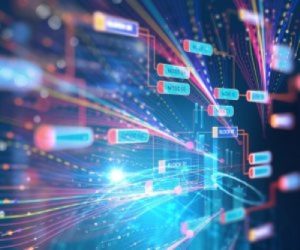
The U.S. Department of Defense's (DoD) shift from a focus on counterterrorism to one of near-peer rivals has highlighted the need to incorporate emerging technologies into the DoD faster than ever before. To keep up with the technological advances of peer nations, it is critical that the DoD speed the time to the field of technologies that can give our troops an advantage in terms of intelligence, data sharing, and visibility. But in this need for speed, the security and the reliability of these solutions cannot be ignored.
DoD is successfully striking the balance of speed, innovation, and reliability with several recent implementations of emerging technology. Continue reading


 The government is at no loss for data. And, over the last decade, there has been a concerted effort to use that data more efficiently to improve decision making and service to the citizen.
The government is at no loss for data. And, over the last decade, there has been a concerted effort to use that data more efficiently to improve decision making and service to the citizen.  Pandemic-necessitated remote work and increased reliance on online apps and sites for routine everyday tasks like shopping and transportation showed us that Internet connection is a critical utility. It also proved that getting connected is not enough -- the speed and quality of that connection have a huge impact on how we carry out day-to-day activities. In a timely coincidence, this reliance on connectivity comes at a time when networks are improving their service to supply that exact speed and reliability.
Pandemic-necessitated remote work and increased reliance on online apps and sites for routine everyday tasks like shopping and transportation showed us that Internet connection is a critical utility. It also proved that getting connected is not enough -- the speed and quality of that connection have a huge impact on how we carry out day-to-day activities. In a timely coincidence, this reliance on connectivity comes at a time when networks are improving their service to supply that exact speed and reliability. With so many high-profile hacks this year, it's easy to want to throw up your hands and say, "Is there nothing that can be trusted?!" Interestingly, that lament is what is driving the latest approach to cybersecurity -- zero trust. Zero trust is what it sounds like, a security approach
With so many high-profile hacks this year, it's easy to want to throw up your hands and say, "Is there nothing that can be trusted?!" Interestingly, that lament is what is driving the latest approach to cybersecurity -- zero trust. Zero trust is what it sounds like, a security approach 
